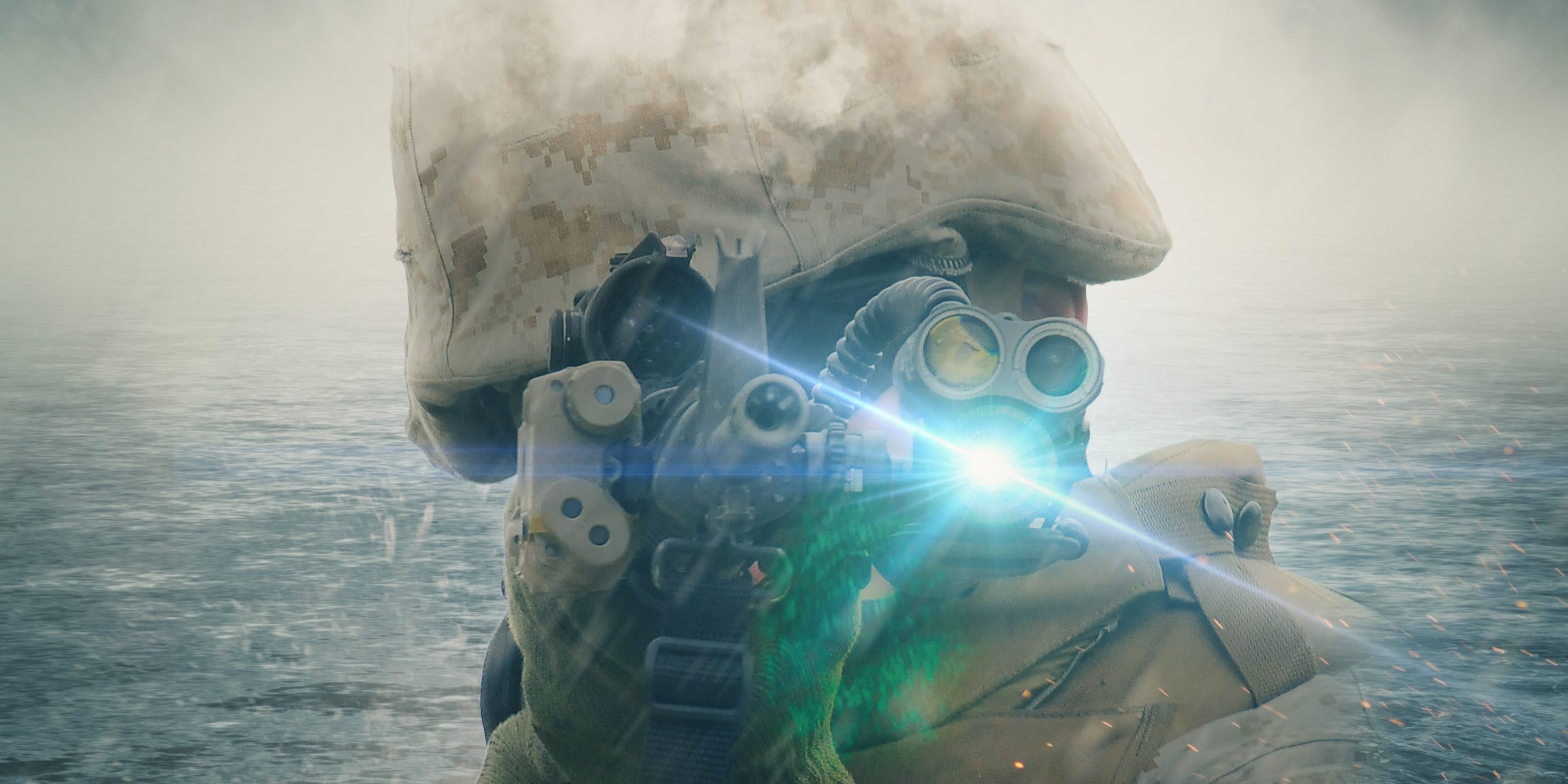INTRODUCTION
Over the past 50+ years, a number of terms (e.g., non-lethal, less-lethal, less-than-lethal, sublethal) [1] have been used to describe weapons that are intended to incapacitate targeted personnel or materiel immediately while minimizing fatalities or permanent injury to personnel [2]. However, it has been acknowledged that no weapon can be entirely non-lethal, as discussed in a 1972 published report to the National Science Foundation (NSF) regarding non-lethal weapons (NLW) for law enforcement [3].
Definition of “Non-lethal Weapons” [3]
“Non-lethal” is a relative term. All weapons, and a wide variety of objects that are not intended to serve as weapons, create some primary or secondary risk of death or permanent injury. The probable seriousness of their effects (their lethality) depends upon a number of factors, not all of which are determined by their design. Weapons not intended to kill or create permanent injury, if used with any degree of regularity, would undoubtedly cause some deaths because of physiological differences among those whom they are employed, physical malfunctioning, improper utilization, and other circumstances. Thus, in the weapons context, non-lethal means substantially less lethal—designed to avoid the creation of a high risk of death or permanent injury as a primary objective and less likely to do so, in fact, than a device (such as a firearm) intended to have the capability of killing.
Even the U.S. Department of Defense (DoD) policy for NLW states in U.S. DoD Instruction (DoDI) 3200.19 that NLW shall not be required to have a zero probability of producing adverse effects [4].
NLW are intended to have relatively reversible effects (see Glossary) and minimize risk of fatalities, permanent injuries, or permanent damage to materiel; however, they shall not be required to have a zero probability of producing these effects in accordance with DoD Directive 3000.03E.
Interest in NLW by law enforcement has been ongoing since 1912 and by the military since World War I (1914–1918) [5]. Irritant chemical agents (referred to as tear gas, riot control agents [RCAs], or lacrimators) were first used in 1912 by the French police in Paris and were the first chemical agents to be used during World War I. The U.S. Army became interested in the irritant chemical agent chloroacetophenone (CN) toward the end of World War I.
Tear gas had become an accepted law enforcement tool and one which demonstrated a fairly successful technology transfer from the battlefields of World War I to urban America [6]. Months before the Treaty of Versailles (which was signed on 28 June 1919), U.S. military leaders were most interested in demonstrating the potential of tear gas in locations like Philadelphia [6].
During the 1920s, the Chemical Warfare Service (CWS) within the U.S. Army conducted more research on CN than any other chemical agent [5]. In 1921, the CWS offered a CN device to the Philadelphia police for an experimental trial [5].
On 19 July 1921, MAJ Stephen Delanoy, who was assigned to the CWS, and his friend, Philadelphia Police Superintendent William B. Mills, choreographed a high-profile experiment in which 200 “volunteers” from the Philadelphia police force would be gassed [6]. The results of the experiment were reported on 20 July 1921 in The New York Times newspaper article [7].
The effectiveness of tear gas as a mob dispeller received the emphatic endorsement of 200 stalwart Philadelphia policemen today after the gas had thrice sent them into hasty and wet-eyed retreat during an official test here.
Police Supt. Mills took a battalion of his huskiest men into a roped-off enclosure, with instructions to capture six men who were armed with 150 tear gas bombs. Three times they charged, but each time were driven back, weeping violently as they came within range of the charged vapor.
Police officials said the test had undoubtedly proved the value of tear gas in police work. Not only is it immediately effective in dispersing a mob, but it might be used to drive a fugitive from a barricaded building, they said.
Based on the U.S. interest in CN, militaries in other countries developed CN [5].
During World War II, CN was the principal irritant chemical agent in the stockpiles of the different countries. Following World War II, CN continued to be the standard irritant chemical agent used by the military and law enforcement [5]. However, in 1959, CN was replaced by 2-chlorobenzylidenemalononitrile (CS), a more potent (10 times more potent than CN as a lacrimator) and less toxic irritant chemical than CN. CS became the principal military and law enforcement RCA [8].
During the Vietnam War, massive use of CS was employed by the U.S. military. Extensive integration of CS usage into U.S. military operations had been achieved [5].
Almost every type of weapons delivery system in Vietnam had a CS capability, so that CS could swiftly be spread over almost any size of target area, at any range and, if necessary, in close coordination with other forms of firepower…Allied troops, or at any rate, the South Vietnamese, Koreans, Thais, and Australians, also had U.S.-supplied CS weapons, but these were mainly hand grenades.
During the tumultuous period of civil unrest in the United States during the 1960s, two Presidential Commissions were formed under President Lyndon Johnson [1]. The first Presidential Commission, known as the Commission on Law Enforcement and the Administration of Justice, convened on 23 July 1965 [9]. It produced a document in February 1967 that addressed the causes of crime and delinquency and provided recommendations for prevention and how to improve law enforcement and the administration of criminal justice [9]. Two recommendations from this report that had direct relevance to the application of NLW were (1) restrict the use of lethal force by the police and (2) widen the application of the scientific and technological revolution to the problems of law enforcement.
The second Presidential Commission, the National Advisory Commission on Civil Disorders, known as the Werner Commission after its chair, Governor Otto Kerner, Jr., of Illinois, was formed to investigate the summer of 1967 riots in Newark and Detroit [10] (Figure 1). One of the recommendations from this second report, which also highlighted the use of NLW, was the following: “To maintain control of incidents which could lead to disorders, the Commission recommends that local officials develop guidelines governing the use of control equipment and provide alternatives to the use of lethal weapons.”
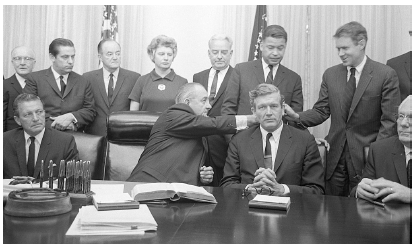
Figure 1: President Lyndon Johnson With Some Members of the National Advisory Commission on Civil Disorder (Kerner Commission) in the Cabinet Room of the White House on 29 July 1967 (Source: Trikosko [11]).
In 1971, the NSF sponsored a study on NLW, with the overall objective to “identify areas in which scientific research can help social problems” [3]. Integral to this study was a 2-day conference cosponsored by the NSF and the Law Enforcement Assistance Administration (LEAA) of the U.S. Department of Justice (DOJ). A key output of the conference was that an effort be made to develop new NLW for use by law enforcement agencies. The study, which was published in 1972, included an assessment of the current state of various weapons technologies but cited that there had been “few advances in police weaponry.” This study provided the following recommendations for research and development: “Chemical and electrical weapons offer the greatest promise in the short term and should be given highest priority in development efforts. Secondary priority should be focused on overcoming the problems related to risks of serious injuries from less-than-lethal kinetic energy impact weapons.”
The limited data regarding the effectiveness and safety of existing NLW cited in the 1972 report culminated in a major recommendation for a government-funded program for “testing and evaluation of existing and newly developed nonlethal weapons” [3].
The U.S. Army Human Engineering Laboratory was contracted by the LEAA to conduct this testing and evaluation over a period of several years from 1973 through 1977 [12]. The objective of the U.S. Army’s research work was the “development of a standardized methodology for the determination of less-lethal weapon effectiveness and safety characteristics.” The evaluation of less-lethal weapons focused on three categories of weapon mechanisms: (1) kinetic energy (blunt trauma), (2) electrical, and (3) chemical.
In June 1986, Attorney General Edwin Meese convened a conference comprised of federal, state, and local law enforcement officers, DoD representatives, scientists, and academicians [13]. The conference had the following multipurpose goals: (1) reassess the progress of less-than-lethal weapons development since the 1971 conference on NLW, (2) examine recent advances in technology, and (3) explore issues to be considered in future development efforts.
For purposes of this conference, less-than-lethal weapons were defined as “devices or agents used to induce compliance with law enforcement personnel without substantial risk of permanent injury or death to the subject” [13]. Thus, the phrase “less-than-lethal” rather than “non-lethal” was adopted to recognize that any such weapon was potentially lethal if used inappropriately.
The conference focused on three types of NLW technology that were currently available—electrical devices, chemical devices, and blunt impact devices. The report highlighted the lack of progress in NLW development, as noted in the following paragraph [13]:
Notably, most of the current weapons reviewed here were also available in 1972. The apparent lack of significant innovation in the years between 1972 and 1986 indicated to participants the crucial need for central coordination and support of future development efforts.
After the 1986 less-than-lethal weapons conference, the National Institute of Justice (NIJ) established a less-than-lethal technologies program. In 1987, the first research project awarded under this program was to the U.S. Army Chemical Research, Development, and Engineering Center at Aberdeen Proving Ground, MD. The project was an assessment of the feasibility of a dart that could deliver a safe but incapacitating chemical to a fleeing suspect. The project progressed to identifying a candidate chemical and the production of a prototype delivery system [14].
NIJ’s less-than-lethal technology program was expanded in 1992 to include the research, development, modeling, testing, and evaluation of all classes of less-than-lethal weapons to address a wide range of possible applications [14].
During the early 1990s, NIJ worked aggressively to identify military and intelligence community technologies that might be candidates for dual-use, law enforcement applications [15]. This program was initiated as the result of a recommendation in 1993 from an NIJ-funded Less-Than-Lethal Technology and Policy Assessment panel of senior policy experts with law enforcement, defense, government, and industry experience [15, 16]. The panel recommended that the DOJ formally request assistance on technology development from the defense and intelligence communities [15].
On 20 April 1994, a memorandum of understanding (MOU) was executed between the DOJ and DoD, which set forth a cooperative agreement to conduct a program to enhance DoD Operations Other Than War and DOJ and other law enforcement operations [17].
In fiscal year 1995, funding was provided to support the DoD/DOJ MOU [15]. This funding was for developing and transitioning technologies applicable to law enforcement and military operations other than war. It was further stipulated that such support may include support for national law enforcement technology centers of the NIJ.
This agreement, codified in a Memorandum of Understanding (MOU) and signed by the Deputy Secretary of Defense and the Attorney General, formalized and focused a longstanding ad hoc relationship. To manage this technology development program and to direct its day-to-day activities, the MOU established a Joint Program Steering Group (JPSG) that would represent both departments and be staffed with members from several agencies [16].
ESTABLISHMENT OF THE DOD NON-LETHAL WEAPONS PROGRAM (DOD NLW PROGRAM) AND THE JOINT INTERMEDIATE FORCE CAPABILITIES OFFICE (JIFCO)
It can probably be argued that the single most important event that clearly demonstrated the effectiveness of NLW was a United Nations (UN) operation, and the Marines were part of a Combined Joint Task Force in 1995 to provide cover when several thousand UN forces withdrew from Mogadishu, Somalia. Lt. Gen. Anthony Zinni (Figure 2), the USMC commander in charge of that operation, was an outspoken proponent of the virtues of NLW [18]. Zinni stated, “Our experience in Somalia with non-lethal weapons offered ample testimony to the tremendous flexibility they offer to warriors on the field of battle” [19].
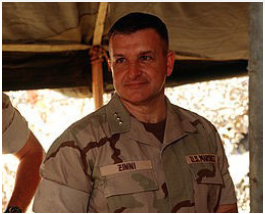
Figure 2: Lt. Gen. Zinni in February 1995 Associated With the Withdrawal Operation of UN Peacekeepers From Mogadishu, Somalia (Source: U.S. DoD [20]).
The establishment of the DoD NLW Program in July 1996 and the subsequent establishment of the JIFCO in July 1997 to provide day-to-day management of the DoD NLW Program have resulted in a more formalized and collaborative process to identify and validate the various users’ NLW requirements. This process provides the basis for development and ultimate fielding of counter-personnel (CP) NLW (as well as counter-materiel NLW).
DoD NLW Program Vision Statement [22]
A fully integrated, non-lethal competency within each Service to complement lethal effects, enhance the Joint Force’s adaptability, and support strategic objectives that include minimizing civilian casualties.
Role of JIFCO [23]
Responsible for the management of the DoD NLW Program and serves as the focal point for technical and programmatic guidance of current and projected joint non-lethal weapons technologies.
Since 1996, the DoD NLW Program has focused on a number of NLW technologies for achieving counter-personnel (CP) effects. The principal CP NLW technologies being considered are human electro-muscular incapacitation (HEMI), active denial/millimeter waves, blunt impact and laser, and sound and light (Figure 3). These technologies are designed to cause temporary or persistent non-lethal effects [24]. A prominent HEMI-based NLW CP item is shown in Figure 4.
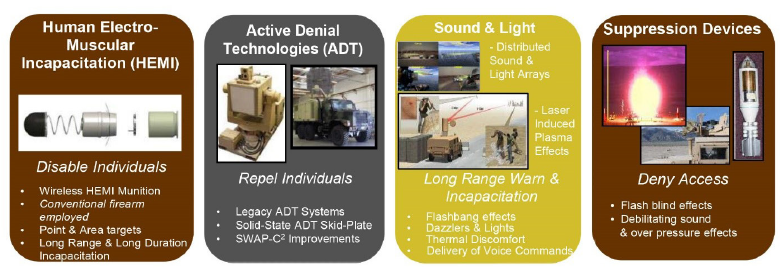
Figure 3: Principal CP NLW Technologies Considered in the DoD NLW Program (Source: Law [25]).
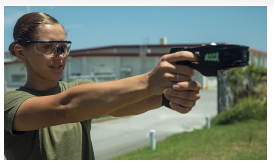
Figure 4: NLW CP Item Being Tested (Source: USMC).
Most recently, the DoD NLW Program focus areas for CP have been the following [26]:
- Deny areas to individuals
- Move individuals
- Suppress individuals
- Disable individuals
Figure 5 illustrates the operational view of the targets to be affected by CP NLW technologies [26].
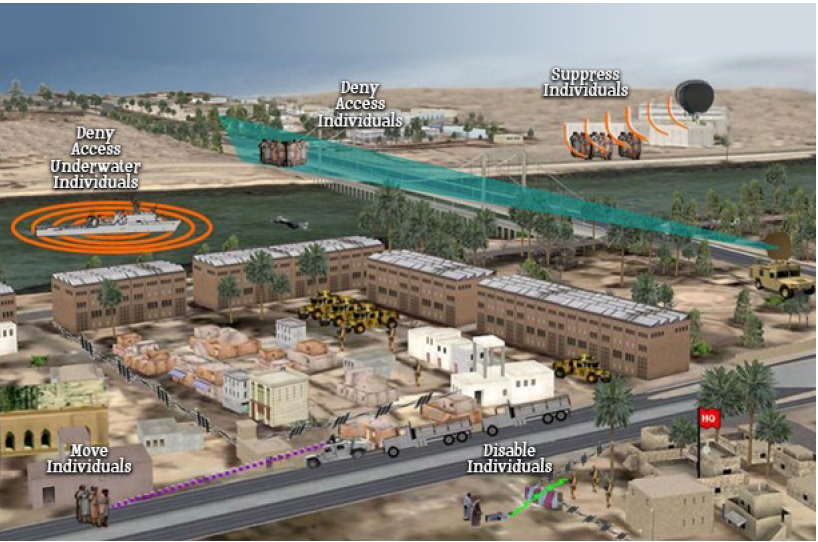
Figure 5: Operational View: Capabilities-Based Assessment (CP) (Source: JIFCO).
ESTABLISHMENT OF CP NLW HUMAN EFFECTS
Less-than-lethal weapons were developed to provide law enforcement, corrections, and military personnel with an alternative to lethal force. When the NIJ established its less-than-lethal technologies program in 1986, the research focused on developing safe but incapacitating less-than-lethal technologies. The NIJ program is designed to evaluate the safety and effectiveness of less-than-lethal weapons through laboratory and field demonstrations and the development of computer simulations and mechanical models [14]. One of the prominent areas of inquiry when conducting or coordinating research for the NIJ less-than-lethal program is understanding the human health effects of less-than-lethal technologies [27].
Following its establishment in July 1997, the JIFCO included the human effects of NLW as an integral component of the DoD NLW Program.
Human Effect: The physical impact on, or behavioral response of, a human resulting from a stimulus or set of stimuli [4].
As the DoD NLW Program has evolved over the years, the organizations that have supported the human effects aspects of the DoD NLW Program have also evolved, and others no longer exist. These organizations, essentially a means to an end, are described as follows:
- The Human Effects Review Board (HERB), established in October 2000, independently reviews non-lethal human effects research and analyses associated with specific NLW systems or technologies [29]. The HERB remains active today [28].
- The Independent Research Assessments (IRAs) are funded by the DoD NLW Program to evaluate research and development plans, validate or challenge assumptions and interpretations of research findings, and provide assessments that will inform DoD NLW Program investment decisions. The IRAs comprise groups of independent subject matter experts convened to provide a critical assessment and peer review of particular non-lethal human effects or technology development research topics. The IRAs assess what additional research needs to be completed, the technical risk involved, and the ultimate path forward for the topic. These independent reviews performed by the IRAs are considered a critical step in achieving advancements in NLWs through scientific research and technological developments [30].
- The JIFCO Human Effects Office is responsible for the DoD processes and guidance on the human effects characterization process [31, 32]. This organization manages the Human Effects Modeling and Analysis Program (HEMAP), which encompasses the development of models and test targets that provide predictions for a range of human effects [33]. These tools permit a standardized approach for NLW human effects assessments, which is essential for system development, assessment, operational testing, training, and operation. HEMAP is the primary way human effects knowledge is transitioned to the NLW community. A diagram of the HEMAP process is shown in Figure 6.
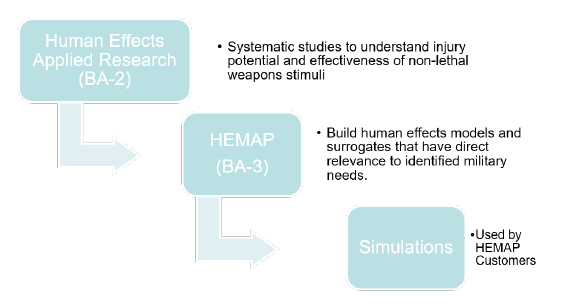
Figure 6: HEMAP Process (Source: U.S. DoD [33]).
As the DoD NLW Program has evolved, the processes and methodologies for gathering non-lethal human effects data for CP NLW have also become more robust, accurate, and valid.
As cited in DODI 3200.19, reversibility (i.e., reversible effects on personnel) is a critical component of CP NLW, and the risk of significant injury is the metric used to quantify reversibility of human collateral effects [34]. CP NLW must achieve a careful balance of effectiveness
with risk of potential injury [34].
As illustrated on the left in Figure 7, CP conventional lethal weapons have a threshold or dose such that when crossed, measures the effectiveness (i.e., increased probability of lethal effect) [34].
As illustrated on the right in the figure, CP NLW developers must identify the necessary “dose” to achieve desired effects (predictability) while remaining within the bounds of acceptable injury risk (reversibility). The area in between is referred to as the “operating envelope,” and it varies widely across the spectrum of non-lethal stimuli and systems [24] (Figure 7). Measuring the dose of the stimuli in a realistic environment is often an important aspect of NLW development and testing [34].
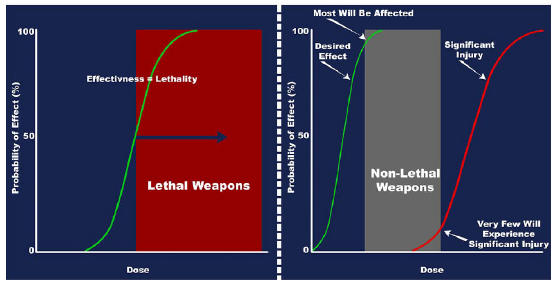
Figure 7: CP Conventional Lethal Weapons (Left) vs. NLW (Right) (Source: DoD NLW Program/Defense Systems Information Analysis Center [DSIAC]).
INCREASING NEED FOR NONLETHAL OPTIONS FOR U.S. MILITARY OPERATIONS IN THE “GRAY ZONE”
An article was presented in the Joint Force Quarterly 80 in 2016 titled “Unconventional Warfare in the Gray Zone” [35]. The statement was made in this article that the United States is entering a period in which threats and the U.S. response to those threats will take place in a segment of the conflict continuum, which is being referred by some as the “gray zone.” The article goes on to state that the gray zone is characterized by “intense political, economic, informational, and military competition more fervent in nature than normal steady-state diplomacy, yet short of conventional war.” It was noted in the article that the gray zone is hardly new.
An article appeared in the August 2019 edition of National Defense titled “Directorate Wants to Change View of Nonlethal Weapons” which discussed the relevance of NLW in the context of gray zone operations [36]. The article indicated that as the United States faces operations in the gray zone, the need for non-lethal options will increase.
Col. Wendell B. Leimbach Jr., USMC and JIFCO Director, stated during his remarks at the National Defense Industrial Association’s (NDIA’s) Armaments Systems Forum (ASF) on 4 June 2019 in Fredericksburg, VA, that NLW capabilities are not being currently fielded that “enable our Warfighters that are out there engaging in those gray zone operations to actually compete” [36] (Figure 8).
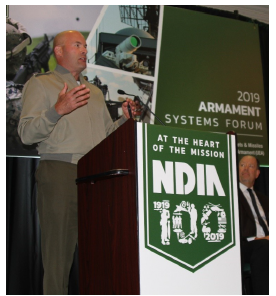
Figure 8: Col. Leimbach Presenting at the NDIA ASF (Source: JIFCO).
Col. Leimbach also noted that the JIFCO is doing well and has established a myriad of effective non-lethal capabilities [36]. He further stated that it is up to the various Services to determine the prioritization of such systems. Col. Leimbach highlighted the following: “Because we are nonlethal, we are not prioritized, and all of those capabilities that are developed by the directorate successfully have languished and do not get fielded.”
To remedy that situation, Col. Leimbach wants to modify the way military officials and industry “talk about nonlethal capabilities and to talk about how they actually ought to be employed” [36]. The phrase which he wants to use is “intermediate force capabilities.”
With the refocus on intermediate force capabilities, mission and vision statements for the DoD NLW Program have emerged [37]. Those statements are provided as follows:
DoD NLW Program Mission Statement [37]
The DoD Non-Lethal Weapons Program develops and fields Intermediate Force Capabilities between presence and lethal effects in support of the Joint Force.
DoD NLW Program Vision Statement [37]
Transform the National Security Enterprise by mainstreaming the planning and employment of Intermediate Force Capabilities to arm the Joint Force with the fullest range of capabilities in support of National Security objectives.
CONCLUSIONS
Over the years, CP NLW have not only witnessed significant interest by law enforcement and the military but have also demonstrated relevant applicability and utility in the performance of non-lethal missions by police and military forces. Since the establishment of the DoD NLW Program in 1996, CP NLW have continued to evolve, diversify, and adapt to the ever-changing and highly complex Warfighter landscape.
Integral to the DoD NLW Program has been the requirement to understand the human effects of these non-lethal technologies. The organizations which have supported the human effects aspects of the NLW have also evolved, while others have become nonexistent.
It is a given that CP NLW will be required to support 21st century operational environments. Furthermore, it is also envisioned that a new paradigm for employing CP NLW will be required for future combat. This paradigm will reflect the integration of intermediate force options, such as CP NLW at every operational phase of combat.
REFERENCES
[1] Davison, N. “‘Non-Lethal’ Weapons.” London, United Kingdom: Palgrave Macmillan, 2009.
[2] U.S. DoD Directive (DoDD). “DoD Executive Agent for Non-Lethal Weapons (NLW) and NLW Policy.” DoDD 3000.03E, issued 25 April 2013, incorporating change 2 on 31 August 2018, https://www.esd.whs.mil/Portals/54/Documents/DD/issuances/dodd/300003p.pdf?ver=2018-10-24-112944-467.
[3] Security Planning Corporation. “‘Non-Lethal’ Weapons for Law Enforcement: Research Needs and Priorities.” National Science Foundation, 1972.
[4] U.S. DoD Instruction (DoDI). “Non-Lethal Weapons (NLW) Human Effects Characterization.” DoDI 3200.19, issued 17 May 2012, incorporating change 2 on 31 August 2018, https://www.esd.whs.mil/Portals/54/Documents/DD/issuances/dodi/320019p.pdf?ver=2019-04-16-084248-833.
[5] Stockholm International Peace Research Institute. “Chapter 1. The Developing Technology of CBW.” The Problem of Chemical and Biological Warfare, Volume I: The Rise of CB Weapons, Stockholm, Sweden: Almqvist & Wiksell,1971, https://www. sipri.org/sites/default/files/ CBW_VOL1.PDF.
[6] Finkel, K. “Philadelphia and the American Infatuation With Tear Gas.” The Philly History Blog, Discoveries from the City Archives, 6 December 2016, https://www.phillyhistory.org.
[7] The New York Times. “Two Hundred Philadelphia Policemen Weep in Flight From Tear Gas in Sham Attack.” Vol. LXX, no. 23,p. 188, 20 July 1921, https://archive.org/details/NYTimes_jul16_31_1921/page/n178.
[8] Rega, P. P. “Irritants – CS, CN, CNC, CA, CR, CNB, PS.” Medscape Reference, article updated 1 August 2018, https://emedicine.medscape.com/article/833315-overview#showall.
[9] U.S. Government Printing Office. “The Challenge of Crime in a Free Society: A Report by the President’s Commission on Law Enforcement and Administration of Justice.” Washington, DC, 1967.
[10] National Advisory Commission on Civil Disorders. Report of the National Advisory Commission on Civil Disorders. New York: Bantam Books, Inc., 1968.
[11] Trikosko, M. S. U.S. News & World Report Magazine. Library of Congress Prints and Photographs Division, 29 July 1967, https://upload.wikimedia.org/wikipedia/commons/a/a1/President_Lyndon_Baines_Johnson_with_some_members_of_the_National_Advisory_ Commission_on_Civil_Disorders_%28Kerner_Commission%29_in_the_Cabinet_Room_of_the_White_House%2C_Washington%2C_D.C.jpg.
[12] Egner, D. O. “The Evaluation of Less-Lethal Weapons.” December 1971, https://www.ncjrs.gov/pdffiles1/Digitization/52037NCJRS.pdf.
[13] Sweetman, S. “Report on the Attorney General’s Conference on Less Than Lethal Weapons.” DOJ, NIJ, March 1987, https://www.ncjrs.gov/pdffiles1/Digitization/ 105195NCJRS.pdf.
[14] Hart, S. “Less-Than-Lethal Weapons: Statement Before the Subcommittee on Aviation, Committee on Transportation and Infrastructure, U.S. House of Representatives.” Director, NIJ, 2 May 2002, https://www.nij.gov/about/director/Pages/hart-aviation.aspx.
[15] NIJ and U.S. DOJ. “25 Years of Criminal Justice Research.” December 1994, https://www.ncjrs.gov/pdffiles1/nij/151287.pdf, accessed 4 June 2019.
[16] U.S. DOJ. “Department of Justice and Department of Defense Joint Technology Program: Second Anniversary Report.” Prepared by the Joint Program Steering Group for the NIJ, February 1997, https://fas.org/irp/agency/doj/164268.htm.
[17] U.S. DoD and DOJ. “Memorandum of Understanding between Department of Defense and Department of Justice on Operations Other Than War and Law Enforcement.” 20 April 1994, http://www.ok-safe.com/files/documents/1/MOU_ Between_DOD_and_DOJ_April_1994.pdf, accessed 4 June 2019.
[18] Schmidle, R. E., Jr., M. Sulmeyer, and B. Buchanan. “Chapter 2: Nonlethal Weapons and Cyber Capabilities.” Understanding Cyber Conflict: Fourteen Analogies, Washington, DC: Georgetown University Press, November 2017, https://carnegie endowment.org/files/GUP_ Perkovich_Levite_UnderstandingCyberConflict_Ch2.pdf.
[19] Reppert, B. “Force Without Fatalities.” Government Executive, 1 May 2001, http://www.govexec.com/magazine/magazine-defense/2001/05/force-without-fatalities/8992/.
[20] U.S. DoD. Photograph of military employee, A1C Randy S. Mallard, 1 February 1995.
[21] U.S. DoD. “History of Non-Lethal Weapons Program.” Non-Lethal Weapons Program, https://jnlwp.defense.gov/About/History/, accessed 4 June 2019.
[22] U.S. DoD. “Planning Guidance, Vision, Mission, & Definition.” Non-Lethal Weapons Program, https://jnlwp.defense.gov/About/Planning-Guidance-Vision-Mission-Definition/, accessed 4 June 2019.
[23] U.S. DoD. “Organization.” Non-Lethal Weapons Program, https://jnlwp.defense.gov/About/Organization/, accessed 4 June 2019.
[24] Owsiak, A., and Col. M. A. Coolican. “Joint Non-Lethal Weapons Program Science and Technology Strategic Plan 2016-2025.” Joint Non-Lethal Weapons Directorate, 31 March 2016, https://jnlwp.defense.gov/Portals/50/Documents/Resources/Publications/Government_ Reports/JNLWP_ST_Strategic_Plan_FINAL_Distro_A.pdf.
[25] Law, D. “Joint Non-Lethal Weapons Program, Unconventional & Emerging Armament Investments.” Briefing presented at the 2019 NDIA Armaments System Forum, 4 June 2019, https://jnlwp.defense.gov/Portals/50/Documents/Resources/ Presentations/Overview_Presentations/DoD%20NLW%20Brief%20for%20ASF%20-%204%20Jun%2019_FINALedits.pdf?ver=2019-07-30-131501-567.
[26] Mansinsin, R., Col. “JNLWD Advanced Planning Brief to Industry.” Modern Day Marine, 21 September 2017, https://jnlwp.defense.gov/Portals/50/Documents/APBI%20Briefs/2017%20DoD_OGA%20NLW%20APBI%20(1).pdf?ver=2017-09-25-164058-980.
[27] NIJ. “Topic: Less-Lethal Technologies.” Office of Justice Programs, 2 June 2011, https://nij.gov/topics/technology/less-lethal/Pages/welcome.aspx.
[28] Foley, S. Personal communication. JIFCO Human Effects Office, 3 July 2019.
[29] National Research Council. “Principal Findings.” An Assessment of Non-Lethal Weapons Science and Technology, Washington, DC: The National Academies Press, 2003, https://www.nap.edu/catalog/10538/an-assessment-of-non-lethal-weapons-science-and-technology, accessed 7 June 2019.
[30] Foley, S. Write-up on independent research assessments (IRAs). JIFCO Human Effects Office, 18 July 2019.
[31] U.S. DoD. “Non-Lethal Human Effects Fact Sheet.” Non-Lethal Weapons Program, 4 May 2016, https://jnlwp.defense.gov/Press-Room/Fact-Sheets/Article-View-Fact-sheets/Article/577996/non-lethal-human-effects-fact-sheet/, accessed 23 April 2019.
[32] JIFCO. “Joint Non-Lethal Weapons Directorate, Human Effects Office Overview.” Presentation, updated 1 November 2018.
[33] U.S. DoD. “Human Effects Modeling Analysis Program Fact Sheet.” Non-Lethal Weapons Program, 18 March 2019, https://jnlwp.defense.gov/Press-Room/Fact-Sheets/Article-View-Fact-sheets/Article/1789371/human-effects-modeling-analysis-program/.
[34] Sedberry, K., and S. Foley. “Modular Human Surrogate for Non-Lethal Weapons (NLW) Testing.” DSIAC Journal, Winter 2019: vol. 6, no. 1, https://dsiac.org/ resources/journals/dsiac/winter-2019-volume-6-number-1/modular-human-surrogate-non-lethal-weapons, accessed 1 January 2019.
[35] Votel, J. L., C. T. Cleveland, C. T. Connett, and W. Irwin. “Unconventional Warfare in the Gray Zone.” Joint Force Quarterly (JFQ) 80, 1st Quarter 2016, https://ndupress.ndu.edu/Portals/68/Documents/jfq/jfq-80/jfq-80_101-109_Votel-et-al.pdf.
[36] Tadjdeh, Y. “Directorate Wants to Change View of Nonlethal Weapons.” National Defense, volume CIV, no. 789, August 2019, https://www.nationaldefensemagazine.org/articles/2019/7/31/directorate-wants-to-change-view-of-nonlethal-weapons
[37] DoD Non-Lethal Weapons Program Vision Statement and Mission Statement, https://jnlwp.defense.gov/About/Planning-Guidance-Vision-Mission-Definition/, accessed 15 December 2020.


